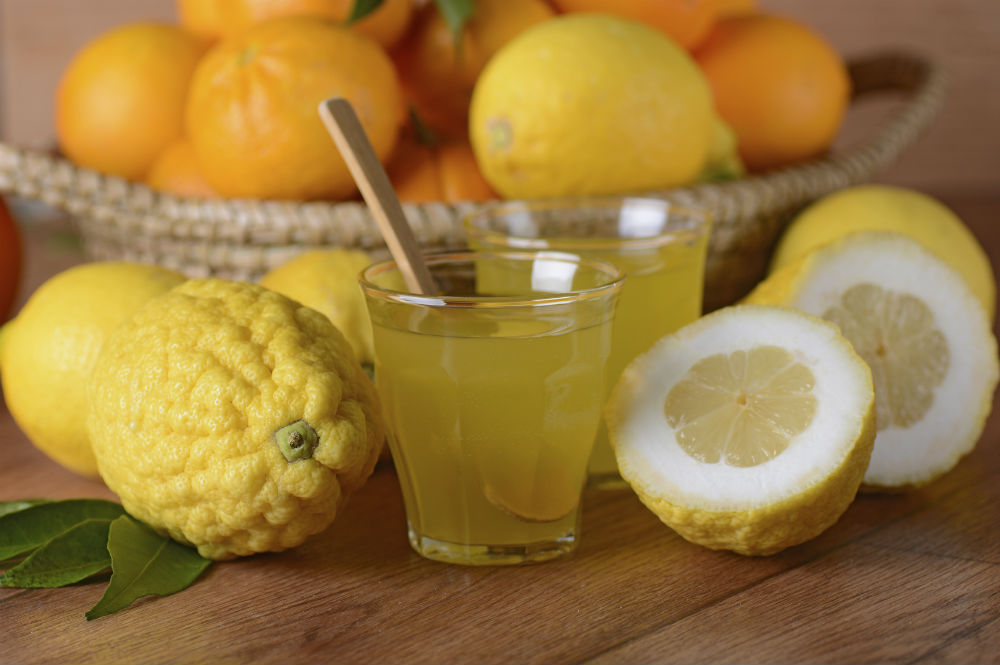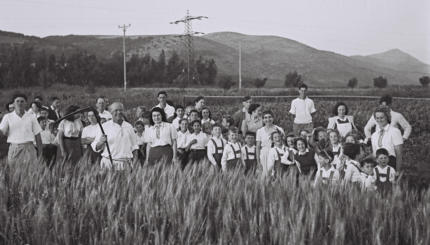Question: Every year I see the Jewish community get really excited about the crop of etrogs to be used during Sukkot. Is there any other use for this strange fruit? Does anyone else get as excited about etrogs as we Jews do?
–Daniel, New York
Answer: The Torah tells us in Leviticus 23:40 that we should “take the product of hadar trees, branches of palm trees, boughs of leafy trees, and willows of the brook, and rejoice before Adonai your God seven days.”
The product of the hadar trees was understood by the rabbis to be the etrog, a citrus fruit that looks like a lemon, and the boughs of leafy trees are understood to be myrtle branches. So on Sukkot we wave the palm branch, myrtle branch and willow branch together with the etrog. The Talmud specifies that these four species should be attractive and of good quality, but the etrog in particular should be beautiful (Sukkah 35a). As a result, there are many people willing to spend a lot of time and money acquiring an especially good specimen of the etrog.
With your help, My Jewish Learning can provide endless opportunities for learning, connection and discovery.
But the etrog has a secret gourmet life that it lives under its alias, the citron. When it’s living its citron-life, the etrog is a sought after ingredient popular in the cuisine of many countries and regions.
You’ve probably heard of Jews making etrog jam after Sukkot, but how about pickling some citron for a Tamil delicacy called narthangai, drying it to make a Korean tea, or using an old Greek recipe to make liqueur from the leaves of the citron tree? A quick search at epicurious.com comes up with 15 different recipes calling for citron.
If you look carefully, you’ll likely find citrons stocked at fancy produce markets in the autumn when they’re in season. You may have even been walking by these tart-smelling fruits for years without recognizing them, because there are many more varieties of citrons than what we’re used to seeing in synagogue. Some are green, and as big as footballs (the Yemenite variety) and some bear a striking resemblance to a sea anemone (the Buddha’s hand variety). These citrons are not acceptable for religious use on Sukkot, since citrons grown purely for consumption are often grafted onto foreign rootstock, which makes for a hardier–but unkosher for waving–plant.
Citrons have also long been recognized for their medicinal uses. In the fourth century BCE Greek thinker Theophrastus prescribed citron as an antidote to poison and a calming agent for upset stomachs. He also believed citron could keep moths out of one’s clothes and improve one’s bad breath.
However, in all my citron-scouting for this column, I didn’t come across any non-Jews who seemed fanatically excited about the citron season. So I guess that is a specifically Jewish phenomenon. On the other hand, I was surprised at how popular citrons are in kitchens all over the world. I guess when life gives you citrons, you have more options than just waving them around with a palm branch.
Adonai
Pronounced: ah-doe-NYE, Origin: Hebrew, a name for God.
etrog
Pronounced: ETT-rahg, Origin: Hebrew, a citron, or large yellow citrus fruit that is one of four species (the others are willow, myrtle and palm) shaken together as a ritual during the holiday of Sukkot.
Sukkot
Pronounced: sue-KOTE, or SOOH-kuss (oo as in book), Origin: Hebrew, a harvest festival in which Jews eat inside temporary huts, falls in the Jewish month of Tishrei, which usually coincides with September or October.
Talmud
Pronounced: TALL-mud, Origin: Hebrew, the set of teachings and commentaries on the Torah that form the basis for Jewish law. Comprised of the Mishnah and the Gemara, it contains the opinions of thousands of rabbis from different periods in Jewish history.
Torah
Pronunced: TORE-uh, Origin: Hebrew, the Five Books of Moses.



